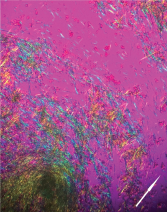
Figure 6: Polarized Microscopy of the Aspirate
Negatively birefringent monosodium urate crystals aspirated from the tophaceous bullous lesion (arrow indicates polarity of light).
Among the acute manifestations, a gouty cellulitis is often seen overlying the massive inflammatory cascade within the synovium of an affected joint. Rarely have bullous gouty lesions been described. Of those that have been documented, the occurrence appears to follow a traumatic episode, similar to patterns described in chronic tophus formation.4 Other acute cutaneous tophaceous reactions, such as the abrupt development of multiple small, inflammatory, pustular gouty skin lesions, appear to be more common and have been described in several case reports.
These reactions, referred to as intraepidermal MSU deposition, have been analyzed in case series, demonstrating an average serum uric acid level of 9.59–11.4 mg/dL.5,6 A review of the handful of case reports of larger inflammatory bullous lesions, dating back to the early 1970s, shows that this is a consistent characteristic of these rare cutaneous manifestations.
What remains unclear is the pathogenesis of the larger blistering lesions, described in this report and only seven other publications. These lesions may demonstrate a profound inflammatory appearance or may develop fairly asymptomatically after trauma. Interestingly, only drainage of the lesion in our patient helped bring about resolution, which appeared to be refractory to corticosteroid therapy. This is consistent with other reports of inflammatory bullous tophaceous lesions that relented only after aspiration and drainage.4
This case demonstrates several features of acute and chronic gouty arthritis, including comorbidities, such as diuretic use, which can lead to a more profound hyperuricemic state. The effects can be profound, as evidenced by the chronic tophaceous deposits and erosive bony changes seen in this patient. The dramatic inflammatory episodes that characterize the acute gout attack have demonstrated an increasingly diverse set of manifestations, as this case highlights.
The variation of the disease manifestations continues to provide a clinical challenge. Recent guidelines made by the American College of Physicians, contrasting both the ACR and EULAR guidelines, have sparked a debate regarding the goal of management of hyperuricemia in patients with gout. With the diverging opinions, it is likely that we will continue to see a disparity in the treatment beliefs of physicians, leading to myriad manifestations of hyperuricemia. What will continue to remain true is the clinical challenge the management of various complications of the hyperuricemic state will provide, and as the trends demonstrate, we will continue to face more gout than ever before.
